This is a school project, for educational purposes only
Don't wanna be here? Send us removal request.
Text
Part 5: Courses of Action & Ethical Perspective (Final Part)
This is part of a school assignment on ethical dilemmas in business. It is for educational purposes only.
part 1 | part 2 | part 3 | part 4
The ethical questions posed by these two Clip Studio Paint controversies ask, fundamentally, about the rights of the artist. Is it fair to charge for features that have already been paid for? Is it right, morally, ethically, and legally, to provide content that may infringe upon intellectual property, even if the infringement is difficult to prove?
So far, the ethical approach taken by CSP and CELSYS as a whole has been indicative of a consequence-based or teleological framework: an observation of results and a subsequent adjustment based on those observations. The public responded negatively to the proposed updates and CSP's reputation suffered, and the conclusion drawn was that both updates were negative in some way.
I believe the response to community feedback was appropriate and well-executed, but part of the issue is that the approach taken was reactive, rather than proactive. If only a few people had raised these concerns, or if corresponding announcements hadn't been made on social media alerting consumers to future changes, both the retracted support for Version 1 users who had opted for the one-time purchase option and the generative AI feature would likely have been implemented. This is despite the fact that both features still stood on shaky moral (and, in the case of AI, legal) ground.
In a way, CSP's approach makes sense—after all, the software is and has always been community-based, so the decision to gauge community feedback before making any changes was a logical one. In the case of the AI feature, Clip Studio even stated its intent to release an "anonymous survey" post-release for users to share their thoughts:

It was clarified in the same thread that this anonymous survey would be based more around how to maximize AI in the context of the drawing software rather than whether it was a sound ethical decision, but, given the wording of the tweets, while the company may have anticipated some controversy around the decision, they likely did not predict the sheer scale and spread of the backlash.
I do think the anonymous survey was an excellent idea when dealing with future decisions that might be ethically questionable in some way, especially given how community-based Clip Studio Paint is. However, where I think the company went wrong was in the execution and timing of the survey. If CSP wants a community or feedback-based approach, I think the best strategy would be to push out surveys prior to release. Given that the announcements gained the most traction on Twitter, it would make the most sense to post similar threads breaking down the planned features with links to surveys at the end. The company could then even use the surveys to track where the majority of their customer feedback is coming from (email, social media, etc.) to further tailor and improve their communication.
I also think a shift (however slight) away from consequence-based ethical reasoning and towards, for example, duty-based or virtue-based ethics would be beneficial. Much of CSP's response to these two situations has positioned duty and virtue as high priorities, and so it would make sense for the company to alter its focus from what garners the best response to what has the most positive impact on its users and community as a whole. This is a subtle reframing of Clip Studio's intent, and it can be argued that the AI feature was meant to have a positive impact, but the failure to consider potential moral and legal ramifications for users of the platform and those whose art was used in the training of such generative AI (in many cases, without knowledge or consent) reveals a blind spot in the company's reasoning.
Many users pointed out that Clip Studio's efforts could be better spent in improving the existing user experience, and I believe that is emulative of the larger issue revealed by these two dilemmas, and why an approach focused on improving the experience of as many users as possible would be best. These sorts of smaller updates would garner less of a response and may not have a visible effect, but it would do wonders to preserve consumers' hard-won loyalty to the brand.
I believe that, overall, Clip Studio Paint was focused too heavily on potential future benefit and not enough on current user experience. The AI feature was intended to get in early on the explosive popularity of AI in 2022, and the move to Version 2.0 with intent to discontinue support of Version 1.0 was based in ambitious plans for a future wherein Clip Studio's pricing model was more on par with competitors such as Adobe Photoshop. Both decisions neglected the reality of the present: in the case of AI, the reality was that there were significant questions around the moral and legal rights of the artist, and, in the case of the Version 2.0 update, the reality was that Clip Studio Paint's ability to differentiate itself as a more affordable and user-focused alternative to programs like Photoshop was (and still is) its greatest advantage.
Another strategy Clip Studio could use would be focus groups or beta testers specifically tasked with evaluating the ethical soundness of its proposed updates. The members of these groups would exist at the intersection of CSP's users and those with experience regarding the ethical question at hand. Plenty of other markets utilize testers such as these on a regular basis, a more current example being sensitivity readers, a type of beta reader dedicated to evaluating a fiction work for its depictions of underrepresented groups. The key to these readers is that they belong to those groups and have a level of professional understanding of harmful stereotypes while also being part of the work's target audience. Their feedback is often vital, but the final decision remains with the creator of the work.
I think a similar concept could be applied to Clip Studio Paint moving forward, in that I believe the company should recruit users with more professional experience involving the issues at hand and seek comprehensive feedback from them. The recruited users could be rotated out depending on the topic, and, once consulted, their feedback could be used or discarded depending on its determined viability. I also think, given the potential problems raised by the generative AI feature, that CSP should consult with legal advisors on any shortcomings with their intended updates, especially in regards to national and international Copyright law.
As a whole, though, I do not necessarily believe that any one strategy should take precedence over another. It is my personal belief that subscribing exclusively to one ethical philosophy can result in a hopelessly narrow worldview, and that cultivating the "best" aspects from a variety of ethical frameworks will create a more nuanced perspective on equally nuanced ethical issues.
At more than 25 million users, Clip Studio Paint is going to have a hard go of satisfying everyone, or even of satisfying as many people as possible. I believe this is, in part, why the company faced difficulty with these two planned features: it may have attributed the initial negative response to the inevitable naysayers in an audience of millions, without stepping back from the situation to fully evaluate whether the intended releases were morally or ethically sound.
Rather than taking one strategy and running with it, Clip Studio should diversify its perspectives as much as possible. This is, after all, reflective of its user base, which exists on a global scale. Clip Studio Paint's greatest strength is its ability to appeal to a broad variety of digital artists, from professional animators working with hundreds of others in their field to beginner illustrators seeking a software conducive to their learning style. Each customer has a unique personal experience that can be used to improve the experience of the app, just as each ethical strategy has strengths and weaknesses that can be maximized or improved upon to create a strong application with a loyal community.
Sources

3 notes
·
View notes
Text
Part 4: Community Response
This is part of a school assignment on ethical dilemmas in business. It is for educational purposes only.
part 1 | part 2 | part 3 | part 5
The community response to both of Clip Studio Paint's announcements was unprecedented, exiting the social media sphere and entering artist and business spaces alike for debate.
Version 2.0 Pricing Announcement
The most common reaction to the Version 2.0 announcement was actually confusion. A lot of the software's customer base consists of casual users who make art as a hobby, and this includes young teenagers. Many of these users did not understand the complex new pricing model, how (or if) it would affect their ability to use the application, or what was even changing to begin with. Diagrams began popping up in online circles attempting to explain what was going to happen, especially since the chart on CSP's website was unclear in terms of what artists should do about the updates.

As explained in a Gizmodo article released the same day as the initial announcement,
"Existing users of version 1 can purchase a perpetual license for version 2, but they won’t have access to feature updates from 2.1 and onward. Developers will also discontinue support for the perpetual license users when they eventually release version 4. Those looking to keep receiving new features will have to buy a one-year update pass, but the company has not revealed what price points we could see from any of these options."
This model, once deciphered, caused considerable frustration among users, especially since the Version 2.0 perpetual/one-time purchase license for Clip Studio Paint EX (the same one that would be denied access to feature updates after Version 2.1) would cost over $200.

As confusion turned to anger mixed with genuine hurt at what was perceived as blatant disrespect from an otherwise reliable software, the response became overwhelming. Artists took to Twitter to vent their frustrations (in many instances to somewhat humorous effect), with this screencap from Megamind being a popular response comparing Clip Studio Paint's new pricing model to that of the Adobe suite:
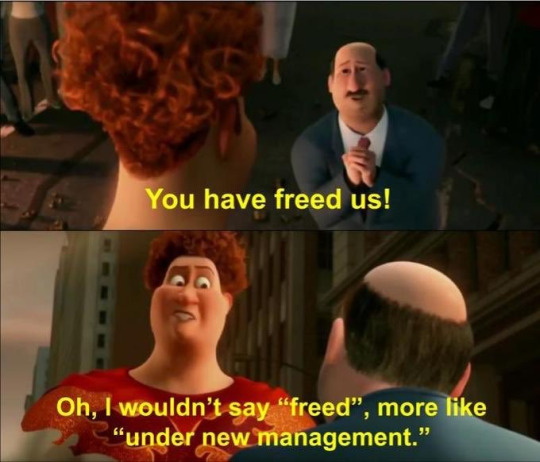
Further responses take much the same tone, regardless of location. One user even posted a compilation of responses in different languages with the caption "I love how everyone united."

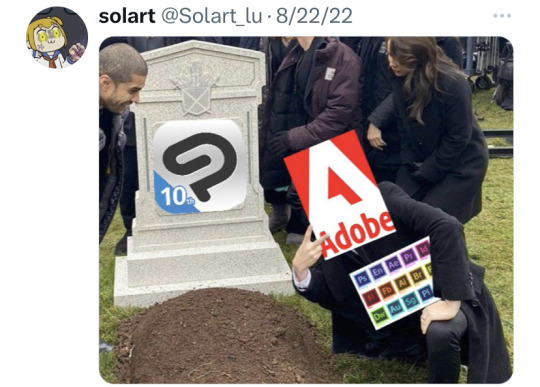

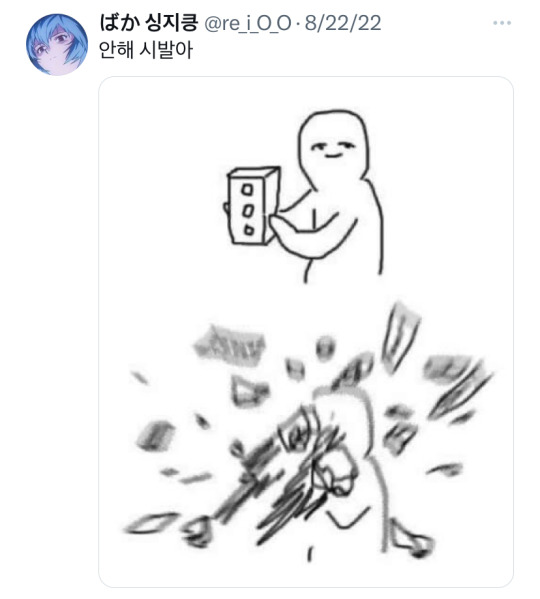
Artificial Intelligence
An article from The Verge delves a little deeper into the source of the AI controversy: "the Japanese art community has been especially hostile toward the concept of autonomous image generation—and Celsys is a Japanese company." In fact, the debate has been so intense that many artist spaces have banned the use of AI in its entirety, according to a blog post by Andy Baio. "Left unchecked, it’s not hard to imagine AI art crowding out illustrations that took days or weeks for someone to make," Baio said.
In September of 2022, Fur Affinity, an art site for fans of anthropomorphized drawings of animals known as "furries," banned AI-generated art on the grounds that it "lacked artistic merit." Also in late 2022, art and animation portal Newgrounds updated its guidelines for much the same reason: "We want to keep the focus on art made by people and not have the Art Portal flooded with computer-generated art."
While the ethics of AI generated art remain ambiguous, this marks a recent trend, in artists' spaces, at least, of banning AI art altogether. "We at Animé Los Angeles do not condone or accept an form of AI-generated art piece being used within our promotional materials nor being sold in our Exhibit Hall or Artist Alley," reads a statement by Animé Los Angeles. Anime NYC, another huge anime convention, has taken the same route, according to ARTnews.
Responses to Clip Studio Paint's announcement of the AI feature ranged from anger to disappointment (to triumph, largely from NFT shill accounts). As one user pointed out on Twitter, "When this releases and until it is shut down, the legitimacy of all art made with the program can be called into question." "Use Ibis paint x instead of this stinky little program," was a suggestion offered by another user. Others begged CSP to do better, pointing out the potential for future lawsuits and imploring the company to "listen to the community" (source).
The issue of legality is an important one, especially since generative AI art is such a new technology. One AI user even discovered photos from private personal medical records in an AI data training set. This alongside many instances of intellectual property theft in AI begs the question of where the line is drawn, and when AI data training becomes illegal or even dangerous.
Personal Thoughts
In the time between Clip Studio's announcement of these features and its amendments, many users suggested retracting financial support or moving on to other applications entirely. Free or "freemium" platforms such as Medibang Paint Pro, Ibis Paint X, and Krita were listed as options. This is, in my opinion, the best way to make a company listen to its users on ethical concerns such as these. The loss of financial support, and, more importantly, the possibility to regain that support, is a key motivator.
Others suggested pirating the software, which is, of course, another ethical matter entirely. In my opinion, it has the potential to be less effective in the long run, since many people don't know how to pirate, don't know how to pirate safely, or will decide it's more trouble than it is worth. Companies can also instate anti-piracy methods, especially when piracy websites are publicized online. Free and freemium alternatives are easily accessible, legal, and stands on solid ethical ground.
As an artist myself, I must admit a level of personal bias with regards to the AI issue. I am of the belief that AI generated art, when trained on non-public-domain works (that is, works protected by Copyright), is detrimental from a moral, legal, and ethical standpoint. Copyright as a whole was introduced to protect the artist's right to create, and I believe that using protected works to train and profit off of AI art spits in the face of why intellectual property exists. That said, I do believe that public domain works, royalty free images, and art that is used with consent and compensation can be used to train AI art ethically. The issue is that this is not how AI art is being used, and there are very few ways to regulate it.
For these reasons, I personally believe that the decision being made on many artists' platforms and in many artists' spaces to ban AI art altogether is the best course of action. Until these images can be regulated to where they are consistently created in a morally and ethically sound manner, I do not think it is safe or even advisable to host these images or allow them to be used for profit, especially if future legal issues arise.
Sources

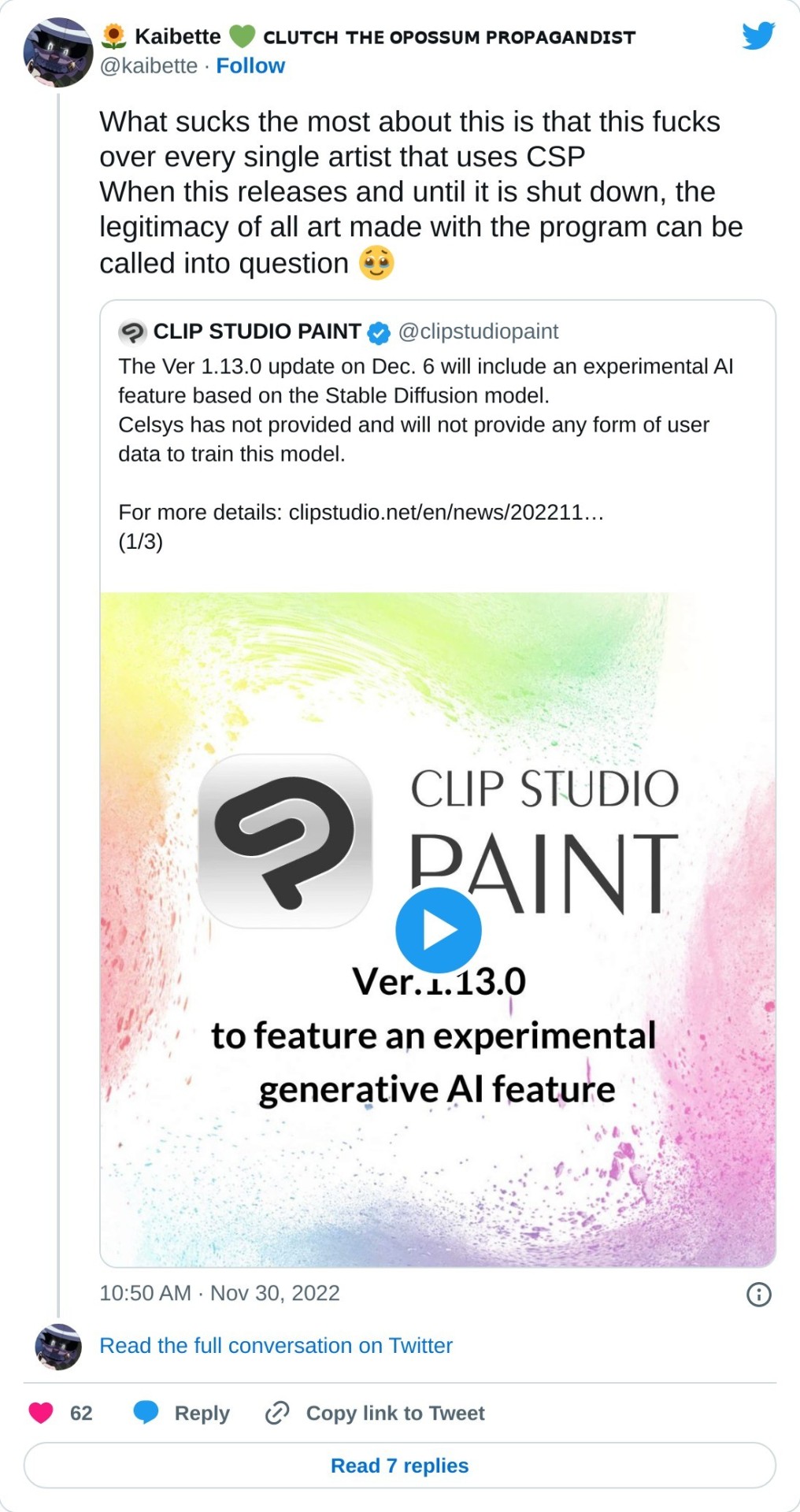
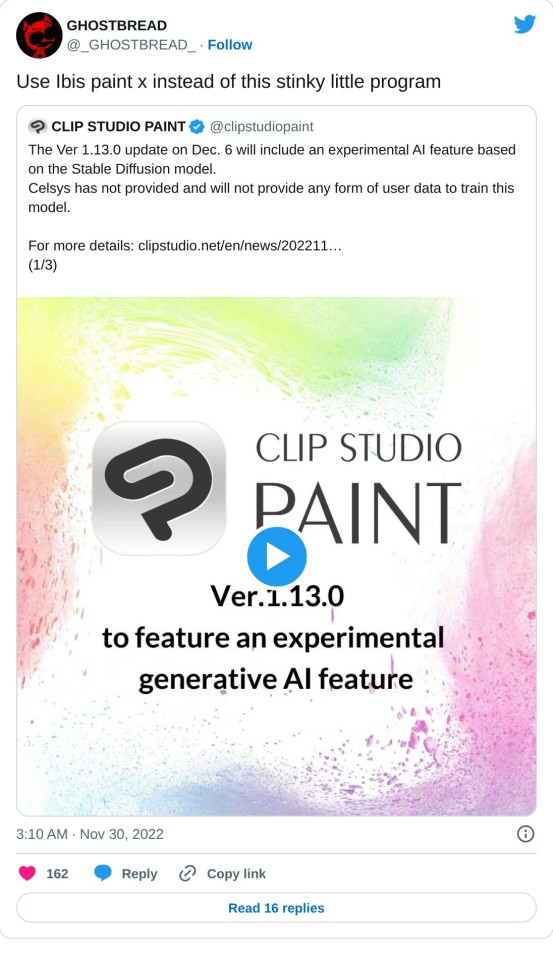
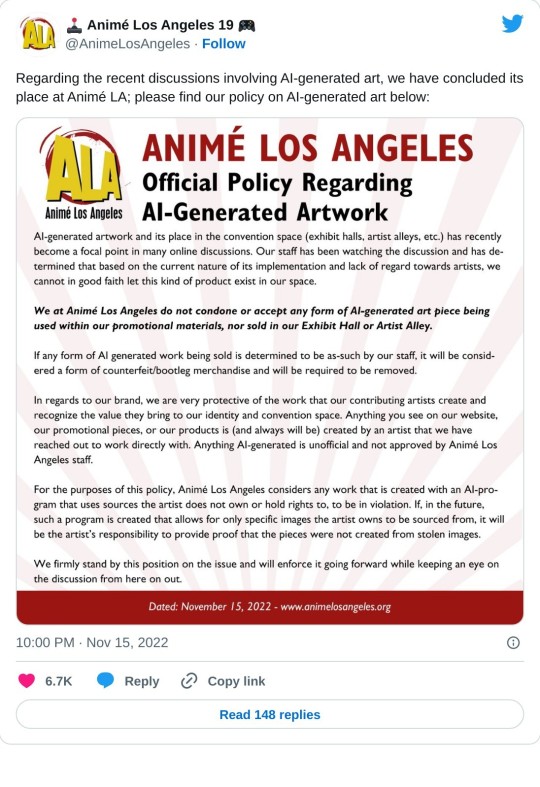

3 notes
·
View notes
Text
Part 3: Company Response
This is part of a school assignment on ethical dilemmas in business. It is for educational purposes only.
part 1 | part 2 | part 4 | part 5
Following community backlash, Clip Studio Paint posted updates to its website. The company left the original messages posted intact and added amendments clarifying its plans moving forward.
Payment Plans
In the case of its planned changes to the one-time purchase options, it listed various intended steps to compromise with existing users. These compromises include:
A free automatic upgrade to Version 2.0 for one-time purchases made since January 1, 2022.
Continued support of Version 1 through stability updates without additional charges, where, previously, CSP had stated that "stability updates will only be provided until the release of Ver. 3.0." It is worth noting the website's clarification that Clip Studio plans to support Version 1 beyond the release of Version 3.0 "for the time being," meaning that this, at least, is subject to change.
A discounted upgrade to Version 2.0 for current owners of the one-time purchase or perpetual license who made the purchase prior to January 1, 2022.
A Version 2.0 testing program for students (and other applicants who might not be able to afford the updated pricing).
Alongside these updates, Clip Studio Paint posted guides to how to access Version 2.0, released on March 14, 2023.
Artificial Intelligence

Clip Studio Paint then listed and addressed concerns raised by consumers regarding the use of AI to generate background images and references for artists. Many of these concerns surrounded the theft and exploitation of intellectual property, the potential infringement upon moral or legal rights caused by the use of AI generated images, and the ethical question of whether it was acceptable to use artist's work in a data set without explicit consent.
The company stated its intent to "create a safe, creative environment" and clarified that CELSYS, its parent company, would not implement a generative AI feature that "[presents] this kind of concern," and stated that the service would be "discontinued in 1.0 after the release of Clip Studio Paint Ver.2."
Here, again, the language used is worth noting. Clip Studio Paint released an update claiming not that plans to use generative AI would be halted, but instead that it would be "discontinued in 1.0" and that the company would avoid AI that raised legal concerns. This leaves the possibility for future AI use open.
Clip Studio Paint posted corresponding apologies for the AI update and the pricing changes on the company Twitter.
Response Breakdown & Interpretation
Clip Studio Paint did include an apology in its update to the AI announcement, stating, "We apologize for the anxiety and concern we have caused regarding the announcement of the Image Generator Palette on November 29." The company justified the previous decision as a choice made while "preoccupied with how generative AI technology could be used creatively" and admitted that "[it] had neglected to take the necessary considerations." CSP's new resolution, moving forward, is "to provide features that can be used with peace of mind by all artists."
In the case of the pricing changes for Version 2.0, Clip Studio Paint did not apologize, instead framing the updates issued to its previous statement as a clarification: "We are happy to give you more details on what Ver. 2.0 will offer, the options for users in every situation with price points, and what has changed since the first announcement." They did state that some revisions were made based on consumer feedback, but, for the most part, the incident was portrayed as a misunderstanding and nothing more.
These responses, taken together, paint an interesting picture. Clip Studio Paint's (and, by extension, CELSYS's) continuous use of first person plural pronouns in reference to itself as a parent corporation to a family of design and illustration software applications appears to be in an effort to appear more personable. The corporate history page on Clip Studio Paint's website corroborates this, including personal interviews with key developers and largely addressing the company as a grassroots organization comprised of a few dedicated, passionate individuals that grew naturally over time.
I believe this establishes a pattern for Clip Studio and CELSYS of very careful word choice, and using first person pronouns to appear more personable is one clear example. Another would be how both statements Clip Studio Paint used language that, to casual readers, likely read as a full retraction of and apology for previous claims. In reality, both statements use nonspecific language that leaves open the possibility for the reintroduction of both features at a future date.
My personal opinion on this matter is that while Clip Studio Paint was doubtlessly concerned at least in part with potential legal matters caused by its intended updates, the clarifications released for both features were largely motivated by profit. The public backlash was widespread enough that the software risked losing a substantial portion of its userbase, as well as what could have been hundreds of thousands of future customers. The safest move for the company at the time was to pull back on the updates, at least for the time being, but I fully believe that if there comes a time when CSP determines that the cost of losing some of its consumer base is outweighed by projected increases in profit, it will reinstate these features.
Ultimately, CELSYS is a corporation, and its goal is to turn a profit. Positive public perception and a loyal userbase are key factors in this, yes, but if the company can find a way to quietly carry out its original plans at a later date in order to maximize profit without causing too much backlash, it will likely do so.
I do think that, for the time being, this was the right move on the company's part. They could have just as easily waited out the cycle of backlash or doubled down, but this decision worked to preserve an otherwise untainted reputation as a reliable, user-centric platform for digital artists all over the world.
Sources
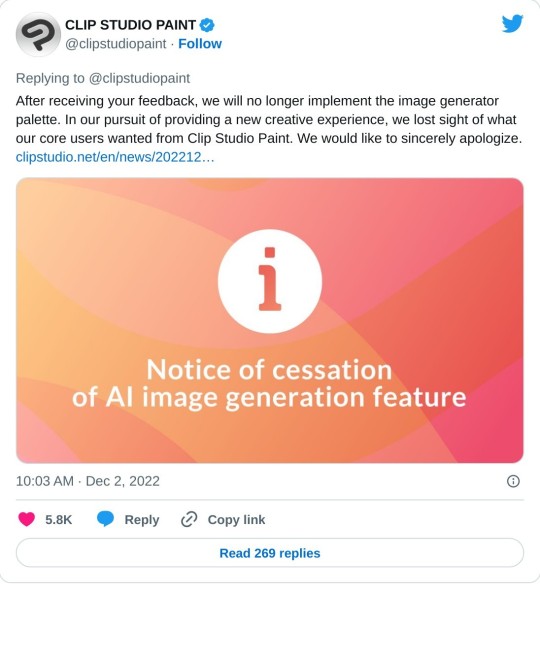

4 notes
·
View notes
Text
Part 2: Company Introduction
This is part of a school assignment on ethical dilemmas in business. It is for educational purposes only.
part 1 | part 3 | part 4 | part 5
According to Clip Studio Paint's website, development began in around 2010. The software's name is derived from the words "Creator," "Link," and "Platform," with the main idea being to link creators together from around the world. A separate website seeming to belong to Clip Studio Paint's parent company, CELSYS, does claim the existence of a "Comic Studio" or "Manga Studio" created around 2004-2006, which could be a translation error or merely an inconsistency across websites.
From its launch in 2012, CSP had global ambitions, selling an English version (at the time called Manga Studio) in North America and Europe. Over the following years, more languages were added, and, as of 2022, the software supports seven languages.
The company released continual updates, adding features such as free 3D models and smartphone previews to aid in manga and webcomic creation, and, in 2015, the animation suite was introduced, enabling users to experiment with a craft that would otherwise be limited to professionals. Eventually an iPad-compatible version was released, followed by an iPhone-compatible version. In 2020, the software was updated to be compatible across all devices, and, in 2021, the program reached 15 million users.
As of today, CSP has more than 25 million users (or 40 million, according to the CELSYS site) since the launch of the app. It has top sales and market share in the graphics software market according to calculated sales by mass retailers. It is a widely trusted software, coming pre-installed on many Android tablets and bundled with pen tablets such as Wacom, as well as being used at over 50 universities.
The website describes the software as "Your go-to art studio for illustration, animation, manga, & webtoons." There isn't much information about the company's operations save that the team started out small (5-6 people) and has since grown to more than 20 members and 30 product testers.
Sources
5 notes
·
View notes
Text
Part 1: Overview
This is part of a school assignment on ethical dilemmas in business. It is for educational purposes only.
part 2 | part 3 | part 4 | part 5
Clip Studio Paint is an immensely popular software application used in the creation of digital art, illustrations, and 2D animation. Since being launched in 2012, CSP has garnered a user base of more than 25 million worldwide, partially thanks to its multiple language options including Japanese, Korean, Traditional Chinese, Simplified Chinese, French, Spanish, German, and English.

image from: clipstudio.net
The controversy surrounding this company exists in two parts: firstly, its plans to move to a subscription-based option and, secondly, the introduction of an AI feature.
The Subscription Issue

Previously, Clip Studio Paint offered its software for a one-time purchase of $49.99, making it stand out from subscription-based competitors such as Adobe Photoshop. The company began offering a "PRO" subscription option in 2018, but in August of 2022, CSP posted a statement clarifying that "from 2023 onwards, the current Version 1 (the one-time purchase, perpetual version for Windows/macOS, “Version 1.x” hereafter), offered as a download and physical version will no longer receive feature updates free of charge."
The update was generally received quite poorly.


The controversy stemmed in large part from the fact that CSP had leaned heavily on its one-time purchase feature as a main selling point for its software, and, many users who looked to CSP as a reliable, high-quality software had already invested large amounts of money in the existing subscription and one-time purchase options, only to be told that, in a matter of months, they would no longer be able to update their software without paying more. Consumer and public responses to this controversy will be explored in part 4.
Here, the dilemma faced by Clip Studio Paint is whether to risk losing some of their existing consumer base for the chance to generate higher profits, and, furthermore whether it was even worth it to ruin an otherwise well-maintained relationship with its dedicated consumer base.
AI Controversy

An update posted by Clip Studio Paint in November of 2022 claimed that an approaching update would include "an experimental AI feature based on the Stable Diffusion model." Stable Diffusion, for clarity, is an artificial intelligence software that generates art and photos based on text prompts, launched in 2022. According to a video posted on CSP's Twitter page, the primary intended purpose for this feature would be to generate backgrounds, references, and props for artists' use, which would be especially useful for comic and webtoon creators having to create content on tight schedules.
Here, the primary controversy stemmed from a note at the very bottom of CSP's press release discussing the matter: "We cannot guarantee that images generated by the current model will not infringe on the rights of others." This caused backlash due to the fact that artificial intelligence, particularly the sort used in AI art generators, trains itself on existing images online, and, since AI art as a whole is still in its infancy, there have been rampant issues regarding intellectual property infringement where artists have found their works being used to train AI art generators without credit or consent.
The dilemma faced by CSP here is how ethical the use of artificial intelligence in the generation of art is. The ethics of AI generated art continues to be a hotly debated topic, especially when issues like copyright become more muddled. Many artists are already underpaid and unrecognized, and many cannot afford to pursue legal action when discovering their art has been used to train AI art generators. Meanwhile, the mechanics of AI art generation are still gray, and the argument over whether AI-generated art can be counted as its own "thing" persists.
Sources

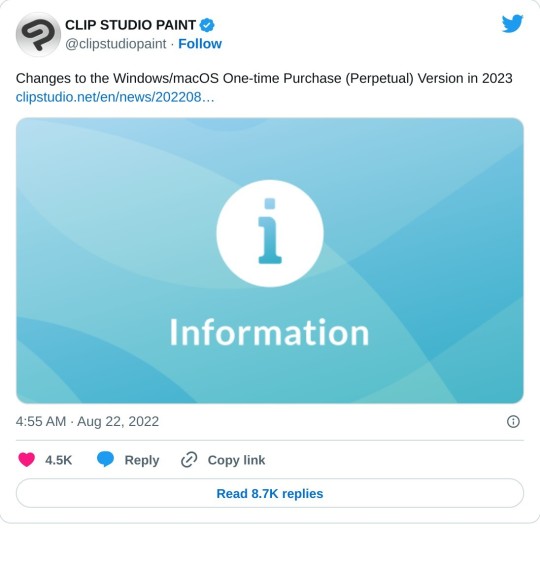
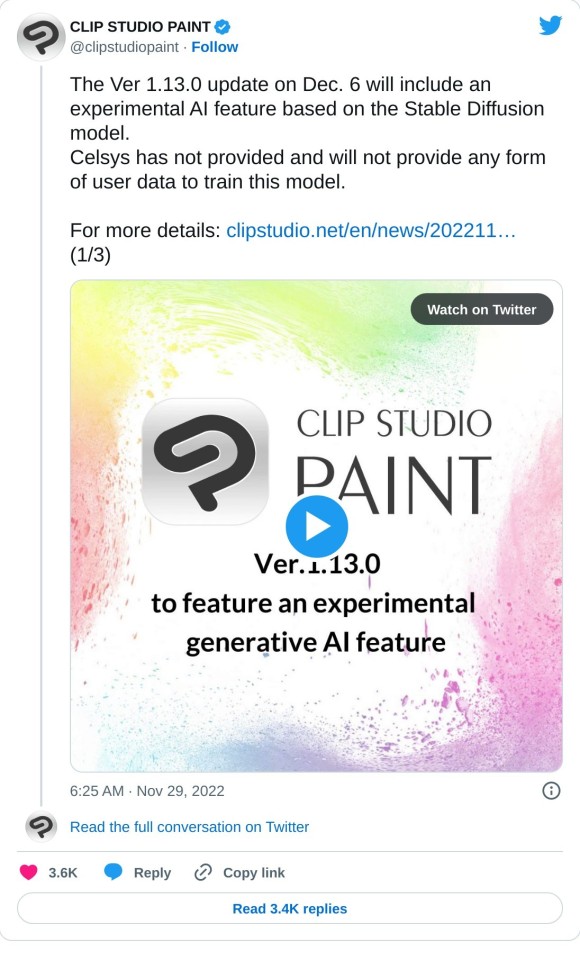
4 notes
·
View notes